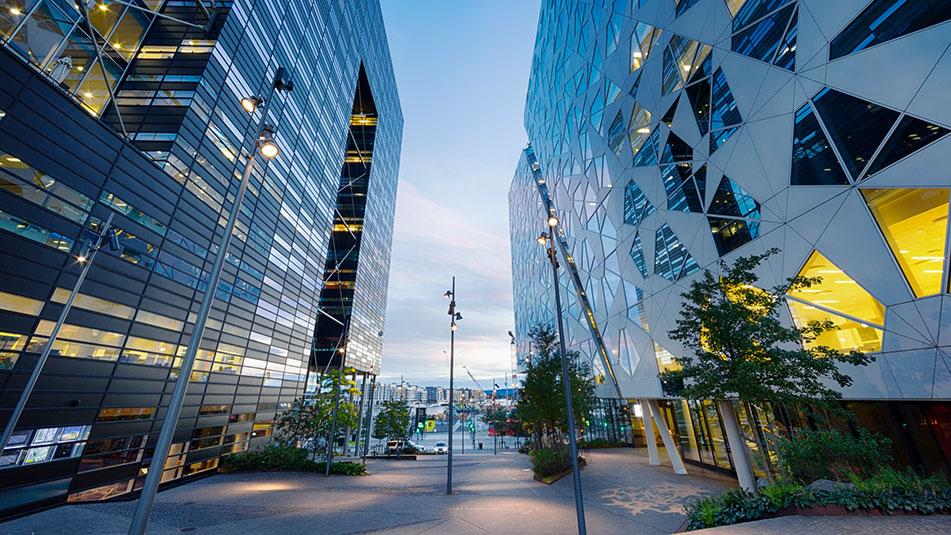Conversations with Cohen on the Post-COVID Workplace
Conversations on the safe return to work are shifting from ideas to action quickly, as occupiers and building owners look to get back to business. Remote work staffing models were adopted out of necessity in the face of the pandemic and some may look to continue operating that way on a permanent basis. However, many industries rely on face to face interaction and in-office personnel, which raises critical questions on how we will get back to work safely and how the market will change in the face of a global health crisis.
Changing the Commute
Transportation is going to be a big issue, especially in dense urban areas that rely on mass transit systems where social distancing difficult. Some firms are looking at suburban campuses to bring the workplace closer to where employees live. Private vehicles or buses are also under consideration as well as providing bike storage for employees that will choose to bike to work.
A Safer Building Entry Experience
Technology will play a big role in how we access our offices. Many new buildings have already adopted voice or phone activated entryways and touchless elevator access. Now, add to that the possibility of temperature scans to screen for building users that may be sick.
More immediate solutions for this first phase of reopening are going to include lobby signage and communal space reconfigurations to encourage social distancing and reduce density. Until new technology can be adapted in older buildings, elevator banks can be staffed to assist in safe elevator use. Staggered entry and dedicated entry and exit points are being explored as a means to keep density down in building entry areas.
Workplace Modifications for Safety
In a recent conversation with Marc Spector of Spectorgroup—a global architecture and master planning firm—we spoke about the changes firms need to make for safer workplaces. “We’re talking about the introduction of sanitary sink locations, not just typical kitchen or bathroom spaces, but throughout the office so there is increased ability to wash your hands” says Spector. He is also exploring rotating workstations 90 degrees to prevent head-on interaction and predicts that facial protection options for employees will need to be put in place.
Increasing the square-footage per employee will become imperative in a reversal of the densification trend. Spector cites the prior model of 100-110 square feet per person and predicts it will move more toward the investment banking model of seating which is closer to more than 200 square feet per person.
Taking a Closer Look at Your Lease
James Pirot, Managing Principal at Cresa New York, states that while major Fortune 100 companies are already ahead of issues like indoor air quality, HVAC and cleaning, smaller occupiers in the 10,000 – 30,000 square foot spaces are not. “But I think as a result of the current situation, addressing these issues will become commonplace in lease negotiations.”
Pirot advises occupiers to be more thoughtful in their requests for cleaning deliverables when negotiating a new lease or requesting modifications to an existing lease, because “while a Class A cleaning specification may be two to three pages, most Class B cleaning specifications may only be one page that states that it is the tenant’s responsibility.”
Implications on Costs and Demand
What we don’t know yet is how the demand for more space versus the need to reduce operating costs will play out in the long term. There will obviously be a reluctance to spend on real estate to increase the square footage per employee and remote or staggered shift staffing models will be a short-term solution to keep costs low. So we think that pricing will have to give.
Companies that move forward will want to be in new buildings that adopt new technologies like touchless access and that will build with virus-resistant materials. This means the price gap between older building stock and new will widen. We expect to see more demand for full-floors versus partial floors given full floor offer the ability to control the whole environment from bathrooms to hallways to foot traffic. We can also expect to see sublease inventory rise as businesses look to make short-term changes to their real estate situations. Short term subleases will be in demand as smaller companies will desire greater flexibility (shorter length leases) and the opportunity to reduce upfront operating expenditures, such as wiring and furniture.
While we’re still in the very early days, it is clear that changes will need to be made as we move forward. As always, Cresa Advisors are here to provide advice for short-, medium- and long-term real estate decisions.
-----------
View Gregg’s full interviews with industry leaders in his video series, Conversations with Cohen.




